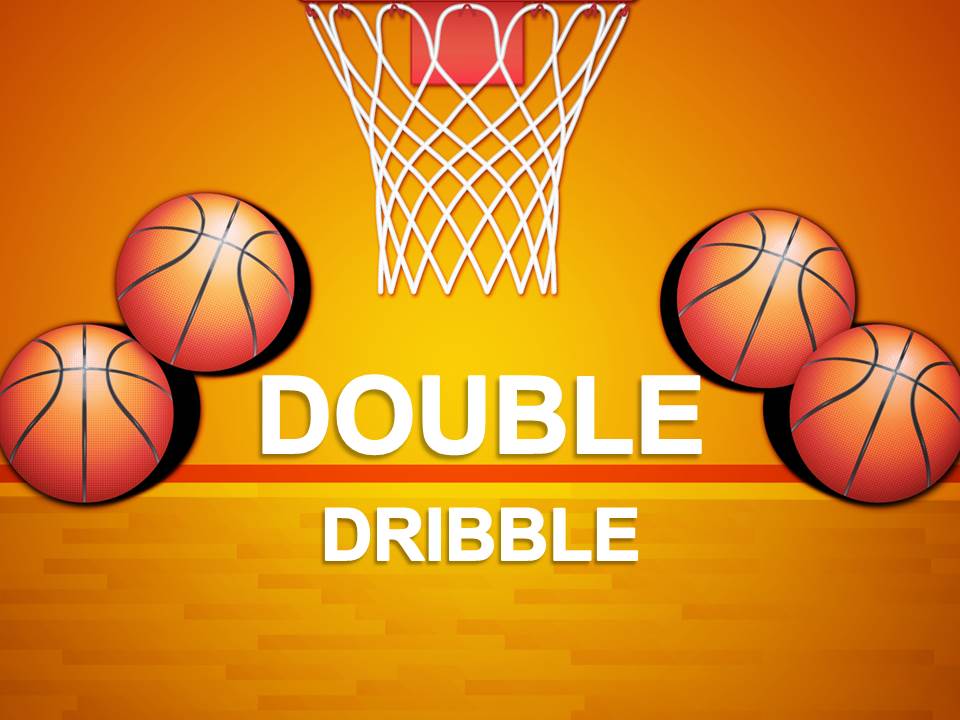Understanding The Double Dribble Definition: A Comprehensive Guide
In the world of basketball, rules and regulations form the backbone of the game, ensuring fair play and a level playing field. Among these essential rules is the concept of the "double dribble," which is pivotal for players, coaches, and fans alike to grasp. This article delves into the double dribble definition, its implications on gameplay, and how it differentiates between seasoned players and novices.
Understanding what constitutes a double dribble is crucial for anyone involved in basketball. Not only does this rule affect game strategy, but it also plays a significant role in determining the pace and flow of the match. The double dribble is often a point of contention during games, with players and coaches frequently debating calls made by referees. As we explore this rule further, we will also consider its historical context and relevance in today's game.
Moreover, this article aims to provide clarity on the double dribble definition and its nuances, as well as offer tips on how players can avoid committing this violation. By the end of this guide, readers will not only have a solid understanding of what a double dribble is but also appreciate its impact on the game of basketball.
What is the Double Dribble Definition?
The double dribble definition refers to a violation in basketball that occurs when a player dribbles the ball, stops, and then begins to dribble again. This rule is designed to maintain the flow of the game and prevent players from gaining an unfair advantage. When a player commits a double dribble, the opposing team is awarded possession of the ball, which can significantly shift the momentum of the game.
How Does a Double Dribble Occur?
A double dribble can happen in several ways, including:
- The player dribbling the ball stops and holds it, then resumes dribbling.
- The player dribbles the ball with both hands simultaneously.
- The player loses control of the ball and then regains it while dribbling.
Why is the Double Dribble Important in Basketball?
The double dribble rule is essential to the game as it helps maintain a level of skill and strategy among players. By enforcing this rule, the game encourages players to develop better ball-handling skills and fosters competitive play. Players who can effectively navigate around defenders while maintaining control of the ball are often more successful in their gameplay.
What Are the Consequences of Committing a Double Dribble?
Committing a double dribble has immediate consequences for the offending team. When a player is caught double dribbling, the referee will call a violation, resulting in the following:
- The opposing team is awarded possession of the ball.
- The game clock continues to run, which can impact the outcome of the game.
- The player may face scrutiny from teammates and coaches, which can affect team dynamics.
Can a Player Dribble Again After Picking Up the Ball?
Once a player picks up the ball and stops dribbling, they cannot dribble again unless they pass or shoot the ball. This is a crucial aspect of the double dribble definition, emphasizing the importance of making strategic decisions on the court. Players must learn to assess their options quickly and decide whether to pass, shoot, or pivot to avoid committing a violation.
How Can Players Avoid a Double Dribble?
To prevent committing a double dribble, players can employ several strategies:
- Practice ball-handling drills to improve control and dexterity.
- Stay aware of their surroundings to make quick decisions regarding passing or shooting.
- Develop the ability to pivot effectively, allowing for better movement without losing possession of the ball.
Is the Double Dribble Rule Universal in All Basketball Leagues?
While the double dribble definition is consistent across most basketball leagues, there may be slight variations in how the rule is enforced. In professional leagues like the NBA and international competitions governed by FIBA, the rule is strictly upheld. However, in recreational leagues or informal games, players may have more leniency regarding double dribbling.
What Are Some Common Misconceptions About Double Dribbling?
Many players, especially beginners, often misunderstand the double dribble rule. Some common misconceptions include:
- Believing that dribbling with both hands is acceptable if done in a certain manner.
- Assuming that picking up the ball and dribbling again is permissible under specific scenarios.
- Thinking that double dribbling is only called if it happens in a critical game situation.
Conclusion: Understanding the Double Dribble Definition
In conclusion, grasping the double dribble definition is essential for anyone involved in basketball. This rule not only affects gameplay but also shapes the skills and strategies that players develop over time. By understanding what constitutes a double dribble and how to avoid it, players can enhance their performance and contribute to a more competitive game. Ultimately, the double dribble serves as a reminder of the importance of skill, strategy, and sportsmanship in the world of basketball.
Article Recommendations
- Laurie Taylor Williams
- Juliette Norton
- Amy Lynn Bradley
- Paulina Andreeva
- Best Clone Troopers
- Yasmin Bleeth
- Tracy Caliendo Net Worth
- Recall On Ramen Noodles 2024
- Bryce Adams Leaked
- Tom Felton Married




